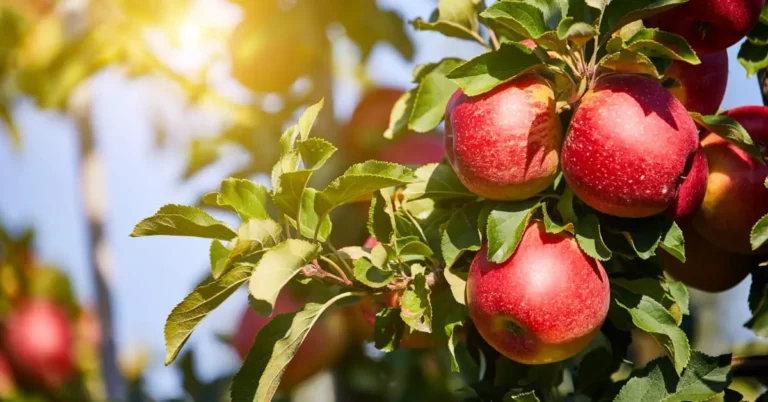50 Best Green Fruits which you can add in your diet
Green fruits are like nature’s tasty treasures, adding a splash of color and vitamins to our meals. From crunchy green apples to creamy avocados, they come in unique shades of green, each with its own unique flavor and provide numerous health benefits. Whether you are munching on them as a snack or using them in delicious recipes, green fruits exhibit the plentiful goodness of our planet.
You can see the Scientific name of Green Fruits and their Nutritional value per 100 grams.
| Green Fruits | Scientific Name | Nutritional Content per(100g) |
|---|---|---|
| Apple | Malus Domestica | Calories:52 kcal Iron: 0.25mg |
| Kiwi | Actinidia deliciosa | Calories:61 kcal Iron: 0.52mg |
| Avocado | Persea americana | Calories:160 kcal Iron: 0.55mg |
| Grapes | Vitis vinifera | Calories:69 kcal |
| Lime | Citrus aurantiifolia | Calories:30 kcal Iron: 0.6mg |
| Banana | Musa acuminata | Calories:89 kcal Iron: 0.3mg |
| Honeydew Melon | Cucumis melo var. inodorus | Calories:36 kcal Iron: 0.18mg |
| Pear | Pyrus communis | Calories:57 kcal Iron: 0.14mg |
| Cucumber | Cucumis sativus | Calories:16 kcal Iron: 0.28mg |
| Plum | Prunus domestica | Calories:46 kcal Iron: 0.28mg |
| Papaya | Carica papaya | Calories:43 kcal Iron: 0.25mg |
| Oranges | Citrus sinensis | Calories:43 kcal Iron: 0.1mg |
| Strawberries | Fragaria × ananassa | Calories:32 kcal Iron: 0.41mg |
| Watermelon | Citrullus lanatus | Calories:30 kcal Iron: 0.24mg |
| Sugar Apple | Annona squamosa | Calories:66 kcal Iron: 0.6mg |
| Cupuaçu | Theobroma grandiflorum | Calories:52 kcal Iron: 0.43mg |
| Breadfruit | Artocarpus altilis | Calories:103 kcal Iron: 0.54mg |
| Noni | Morinda citrifolia | Calories:43 kcal Iron: 0.4mg |
| Kiwano | Cucumis metuliferus | Calories:44 kcal Iron: 0.4mg |
| Starfruit | Averrhoa carambola | Calories:31 kcal Iron: 0.08mg |
| Ugli fruit | Citrus ×Tangelo | Calories:38 kcal Iron: 0.1mg |
| Grape fruit | Citrus × paradisi | Calories:42kcal Iron: 0.1mg |
| Guava | Psidium guajava | Calories:68 kcal Iron: 0.26mg |
| Coconut | Cocos nucifera | Calories:354 kcal Iron: 2.43mg |
| West African horned cucumber | Cucumis metuliferus | Calories:44 kcal Iron: 1.13mg |
What do green fruits provide?
Green fruits provide a range of health benefits! They are high in vitamins, minerals, and antioxidants that promote universal health. They can enhance your immune system, improve digestion, and promote healthy skin. Additionally, green fruits are frequently low in calories and excessive in fiber, making them a notable choice for weight management. So, including fruits in your weight loss plan may be a delectable and nutritious way to improve your well-being!

Best Green Fruits with their Benefits:
Are you seeking for some new fruits to include in your healthy diet? Then take a look at some of the best green fruits.
1- Green Apples:
Green apples are usually mild to vibrant green skin.
Taste:
They frequently have a barely tart taste, including a zesty taste to numerous dishes.
Located:
Green apple timber can be found in orchards and gardens in lots of parts of the world.
Benefits:
- Green apples are high in nutritional fiber, which assists digestion and supports weight management.
- They are an amazing supply of vitamin C, promoting a sturdy immune system and healthy skin.

2-Kiwi:
Green kiwi is a small, oval-shaped fruit with brown, fuzzy skin that encases vibrant, emerald-green flesh. The interior of the kiwi is dotted with tiny, suitable seeds for eating.
Taste:
It has a tangy-candy taste with a clean and barely tart taste.
Located:
Kiwis are native to China and were initially recognized as “Chinese gooseberries.”
Benefits:
- Kiwi is a tremendous source of nutritional fiber, promoting digestive health and helping to control blood sugar levels.
- Kiwi is a superb supply of potassium, which helps coronary heart fitness and enables maintaining ordinary blood pressure.

Do you know which Green Fruit has the highest Vitamin C content ?
Kiwi
3-Avocado:
Avocado is a pear-shaped fruit with green or blackish-green, bumpy skin. The flesh is creamy, faded green, and has a smooth, buttery texture.
Located:
Avocados are native to the Western Hemisphere from Mexico south to the Andean regions and are widely grown in warm climates.
Benefits:
- Avocados are known for their high content of monounsaturated fats, which can help lower bad cholesterol levels and reduce the risk of heart disease.
- Avocado is an excellent source of nutritional fiber, promoting healthy digestion and helping with weight management.

4- Green grapes:
Green grapes, also known as white grapes, are small to medium-sized spherical or oval fruits. They have a light green to mild yellow-green skin that may be clean or barely translucent.
Located:
Grapes are mostly cultivated in vineyards and may be found in domestic gardens and industrial farms.
Benefits:
- Grapes offer important nutrients, which include vitamin K and copper, that are vital for bone health and immune system function.
- Grapes have an excessive water content, helping to keep you hydrated and support skin health.

5-Limes:
Limes are small, spherical citrus fruits with shiny green, thin skin. The flesh is normally light, inexperienced, and juicy, containing small seeds.
Taste:
Limes have a tart and tangy taste that provides a zesty kick to many dishes and beverages.
Located:
Limes thrive in tropical and subtropical areas across the world.
Benefits:
- Limes are a tremendous supply of vitamin C, which is essential for immune health, skin support, and wound healing.
- Lime juice is known to stimulate the digestive system and can provide relief from indigestion or constipation.

6-Bananas:
Green bananas are unripe bananas that have a thick, green peel. As they ripen, their color changes to yellow and then eventually to speckled brown.
Taste:
They are normally firm and starchy, with a mild, slightly astringent taste.
Located:
Green bananas are cultivated in tropical and subtropical areas across the world, which include nations like India, the Philippines, Ecuador, and lots of others.
Benefits:
- Green bananas are an excellent source of resistant starch, a form of dietary fiber that helps with digestive health.
- Due to their excessively resistant starch content, green bananas have a low glycemic index and , because of this, they are able to help stabilize blood sugar levels.

7-Honeydew Melon:
Honeydew melon generally has a spherical to oval shape, and its skin is clean and slightly waxy to the touch.
Taste:
The flesh is pale green, juicy, and rather sweet while ripe.
Located:
Honeydew melons are grown in various parts of the world, with regions like the United States, Mexico, and Central America being the most important producers.
Benefits:
- It’s a very good supply of vitamin A and K, in addition to nutritional fiber.
- The excessive water content of honeydew makes it a hydrating option.

8-Green Pears:
Pears come in numerous shapes; however, they are normally pear-shaped, with a narrow neck and wider bottom. The skin can vary from green to yellow to reddish-brown, depending on the variety. Pears have a juicy, white to creamy flesh with a gritty texture across the core.
Located:
Green pears are cultivated in lots of parts of the world, with China being the most important producer, followed by international locations just like the United States, Argentina, and Italy.
Benefits:
- They are a good source of fiber.
- Pears are also high in vitamins, such as vitamin A, vitamin K, and numerous B vitamins.

9-Cucumber:
Cucumbers are elongated, usually cylindrical greens with smooth, green color. The flesh is light green and consists of small, edible seeds clustered within the center.
Located:
Cucumbers are cultivated in lots of parts of the world, and they thrive in temperate or hot climates. They are generally grown in areas with a regular water supply and well-drained soil.
Benefits:
- Cucumbers are low in energy and excessive in water content, making them an excellent choice for hydration.
- They are a very good supply of nutrients and minerals, which include vitamin K, vitamin B1.

10- Sour green Plums:
Sour green plums are small, spherical fruits with green color. They have tart and crisp flesh. The skin can vary in shade, starting from mild green to a deeper, more yellowish green.
Located:
They are normally located within the Mediterranean, the Middle East, and a few components of Asia.
Benefits:
- They are a great source of nutritional fiber, which could aid in digestion and help regulate blood sugar levels.
- They additionally include important nutrients and minerals, consisting of vitamin A, vitamin K.

11-Green Papaya:
Green papaya is the unripe, younger fruit of the papaya tree. It has green, clean skin and firm, light flesh.
Taste:
The inner isn’t the same as the ripe orange papaya, with a much less sweet and more neutral taste.
Located:
Green papaya is usually found in countries with warm climates, which includes parts of Asia, the Caribbean, and South America.
Benefits:
- Papaya consists of an enzyme known as papain, which can be a useful resource in digestion.
- It is also used in traditional medicine for its potential anti-inflammatory and antioxidant properties.
| Green Fruits | Scientific Name | Nutritional Content |
|---|---|---|
| Apricot | Prunus armeniaca | Calories:48kcal Iron:0.4mg |
| Gooseberries | Ribes uva-crispa | Calories:44kcal Iron:0.3mg |
| Tomatillos | Physalis philadelphica | Calories:32kcal Iron:0.4mg |
| Tamarind | Tamarindus indica | Calories:239kcal Iron:0.6mg |
| Olives | Olea europaea | Calories:115kcal Iron:0.5mg |
| Cactus Pear | Opuntia ficus-indica | Calories:41kcal Iron:0.4mg |
| Bergamot | Citrus bergamia | Calories:43kcal Iron:0.4mg |
| Cucamelon | Melothria scabra | Calories:12kcal Iron:0.5mg |
| Feijoa | Acca sellowiana | Calories:55kcal Iron:0.2mg |
| Mango | Mangifera indica | Calories:60kcal Iron:0.16mg |
| Jackfruit | Artocarpus heterophyllus | Calories:95kcal Iron:0.23mg |
| Jocote fruit | Spondias purpurea | Calories:56kcal Iron:1.1mg |
| Soursop | Annona muricata | Calories:66kcal Iron:0.6mg |
| Figs | Ficus carica | Calories:74kcal Iron:0.37mg |
| Finger limes | Citrus australasica | Calories:43kcal Iron:0.2mg |
| Green black sapote | Diospyros texana | Calories:131kcal Iron:0.91mg |
| Marula fruit | Sclerocarya birrea | Calories:47kcal Iron:0.25mg |
| Osage orange | Maclura pomifera | Calories:79kcal Iron:0.34mg |
| Yuzu | Citrus junos | Calories:35kcal Iron:0.3mg |
| Hala fruit | Pandanus tectorius | Calories:85kcal Iron:0.6mg |
| Cempedak fruit | Artocarpus integer | Calories:95kcal Iron:1.2mg |
| Monk fruit | Siraitia grosvenorii | Calories:25kcal Iron:0.6mg |
| Guinep fruit | Melicoccus bijugatus | Calories:35kcal Iron:0.35mg |
| Calabash fruit | Crescentia cujete | Calories:24kcal Iron:0.6mg |
| Acorn Squash | Cucurbita pepo var. turbinata | Calories:40kcal Iron:0.8mg |
12-Green Oranges:
Oranges, also known as unripe or bitter oranges, are a lot of citrus fruit that differs from the sweet, ripe oranges usually enjoyed for their sweetness.
Taste:
The flesh is generally bitter and much less juicy than ripe oranges, and the fruit can be smaller in size.
Located:
Green oranges may be found in various citrus-generating areas across the world.
Benefits:
- Oranges, like ripe oranges, are high in vitamin C, which is essential for immune health and overall health.
- They are regularly utilized in culinary programs and beverages to add a tart, tangy flavor.
13-Green Strawberries:
Green strawberries are unripe or under ripe strawberries with a distinct green color. They are smaller and less available than their fully ripe, purple counterparts.
Located:
Green strawberries may be found in areas where strawberries are cultivated. Green strawberries are frequently harvested intentionally at an early age for unique culinary uses.
Benefits:
- They are an excellent supply of vitamin C, fiber, and antioxidants.
- Green strawberries are specifically famous in creative and upscale cuisine for their ability to balance flavors and textures.
Do you know which green fruit is known for its creamy texture & healthy fat content?
Its Avocado
14-Green Watermelon:
Watermelon has a light green color, which could range from mild to medium green, depending on its level of ripeness. The interior is firm and generally white or light purple.
Located:
Watermelons are grown in lots of parts of the arena with warm, sunny climates.
Watermelon may be found in areas where watermelon cultivation is common, including the United States, Mediterranean countries, and diverse tropical and subtropical areas.
Benefits:
- It is a great source of vitamins, especially vitamin A, and consists of minerals, including calcium.
- Watermelon is likewise hydrating because of its excessive water content, making it a fresh and low-calorie choice.
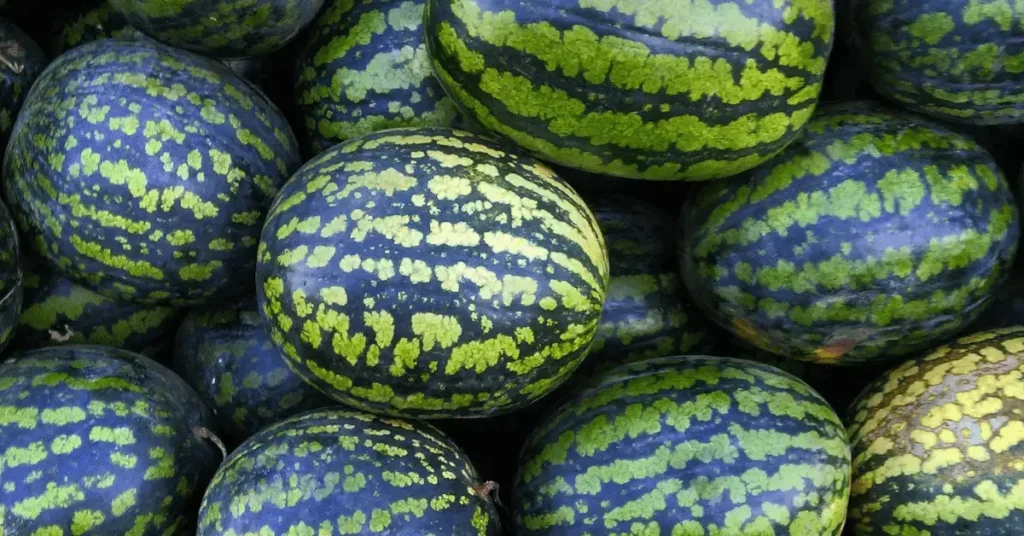
15-Green Sugar Apple:
Green sugar apples, also called custard apples, have a bumpy, faded green color with a scaly texture. The sugar apple is usually oval or heart-shaped.
Located:
Green sugar apples are grown in tropical and subtropical areas across the world. They thrive in warm, humid climates and are generally found in international locations, which include India, the Philippines, and numerous parts of South America.
Benefits:
- Green sugar apples are an excellent source of nutritional fiber, vitamins, minerals and magnesium.
- They are low in energy and can contribute to a balanced and nutritious diet.

16-Green Cupuaçu:
Green cupuaçu is a tropical fruit native to the Amazon rainforest. It has a thick, rough, green rind with a creamy, white pulp inside. The cupuacu is commonly rectangular or round, and it consists of massive seeds.
Located:
Cupuaçu is commonly located in the Amazon basin, where it grows on the cupuaçu tree.
Benefits:
- It is high in vitamins, especially vitamin B1, and provides essential minerals like calcium and phosphorus.
- It is a superb source of nutritional fiber, helping in digestion.

17-Breadfruit:
Breadfruit is a large, spherical, or oblong fruit with a green, bumpy skin.
The skin is hard and turns into yellow or brown when ripe.
Inside, the flesh is starchy, cream-colored, and has a mild, barely nutty flavor.
Located:
Breadfruit trees are usually found in tropical areas, which include the Pacific Islands, Southeast Asia, and parts of the Caribbean.
Benefits:
- Breadfruit is a superb source of nutritional fiber, vitamins, and minerals, including vitamin B3, and calcium.
- Breadfruit may be prepared in numerous ways, from frying to baking, and may be utilized in savory and sweet dishes.

18-Noni:
Noni is a small, irregularly formed fruit with a knobby surface. The Noni has a pungent, extremely ugly odor, which has earned it the nickname “cheese fruit.
Located:
Noni is native to Southeast Asia and the Pacific Islands, which includes Hawaii, where it is generally grown.
Benefits:
- The Noni includes antioxidants that can help combat free radicals and decrease oxidative strain in the body.
- Noni has been used to relieve digestive problems and promote gastrointestinal health.
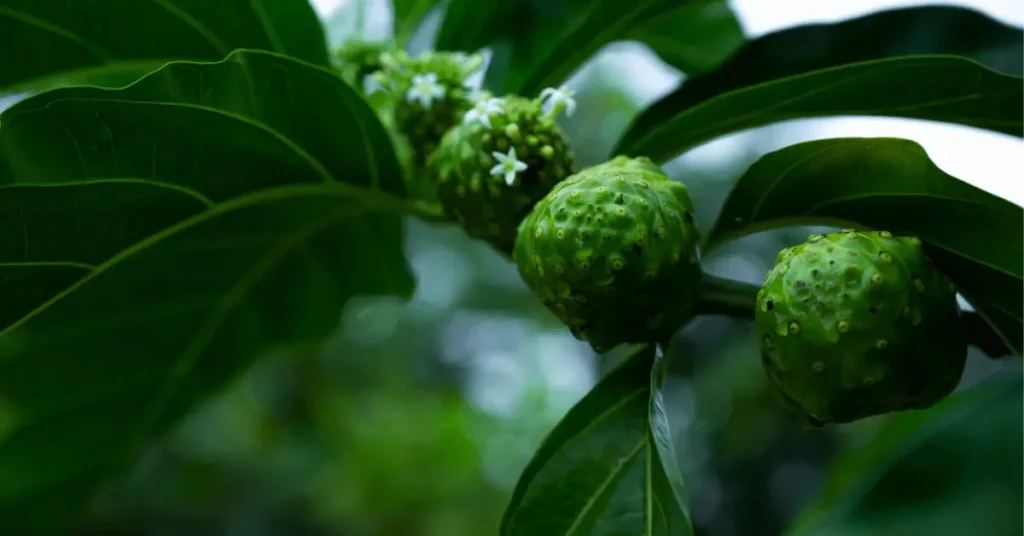
19-Green Kiwano:
Green Kiwano is a spiky, oval-formed fruit with vibrant orange skin covered in horn-like protrusions.
Located:
Green Kiwano is native to sub-Saharan Africa; however, it’s also grown in New Zealand and other nations with appropriate climates.
Benefits:
- Kiwano is a good source of nutrients and minerals, especially vitamin B6, vitamin A which assist immune fitness and overall well-being.
- The Kiwano excessive water content can assist with hydration, making it a fresh desire in warm climates.

20. Star fruit:
Star fruit is aptly named because of its unique shape; while sliced, it forms a star-like pattern, which makes it an attractive addition to dishes. It is normally shiny yellow or green and has a waxy, clean skin.
Located:
Star fruit is native to Southeast Asia; however, it is now grown in lots of tropical and subtropical areas worldwide.
Benefits:
- Star fruit is a great source of vitamin B5, fiber, and antioxidants, which could improve the immune system and promote overall health.
- It is a low-calorie fruit, making it a healthy choice for those seeking to manage their weight.

21. Ugli fruit:
Ugli fruit is a medium-sized fruit with bumpy, rough, and irregularly formed skin. It changes their color when it ripe.
Located:
Ugli fruit is primarily grown in Jamaica, where it was first discovered and cultivated. It’s also grown in different parts of the Caribbean.
Benefits:
- This is a superb source of vitamin C, an antioxidant that helps the immune system and overall health.
- It includes nutritional fiber, which could be a useful resource for digestion and help maintain a healthy gut.
22-GrapeFruit:
Grapefruit is a famous citrus fruit known for its refreshing flavor and a range of potential health benefits.
The flesh ranges from light yellow to deep pink or pink, depending on the variety, and it is divided into segments.
Located:
Grapefruits are primarily grown in tropical and subtropical regions, with Florida, Texas, and California in the United States being major producers.
Benefits:
- Grapefruit is a super source of vitamin A, an essential nutrient that helps the immune system and helps maintain healthy skin and tissues.
- It’s a low-calorie fruit, making it a smart choice for those looking to control their weight while still taking part in a sweet and tangy snack.

23-Guava:
Guavas are typically spherical or oval, with green or yellow skin that can vary in thickness. The guava exudes a sweet, aromatic fragrance.
Located:
Guava is grown in tropical and subtropical areas worldwide, with countries like India, Brazil, Mexico, and Thailand being significant producers.
Benefits:
- Guava is one of the richest sources of vitamin A, offering more than four times the content material found in a medium orange.
- This vitamin is important for immune system support and skin health.

24-Green Coconut:
Coconuts are the young, immature level of the coconut fruit, generally harvested earlier than they fully mature. When opened, the green coconut reveals a clear, mildly sweet liquid and soft, jelly-like coconut flesh.
Located:
Coconuts are commonly found in tropical and subtropical regions, such as international locations in Southeast Asia, the Caribbean, Central and South America, and components of Africa.
Benefits:
- The clear liquid inside, often known as coconut water, is an excellent natural hydrator, high in electrolytes such as calcium and sodium.
- They provide essential nutrients and minerals, such as vitamin A, vitamin B, and nutritional fiber, contributing to overall health.

25-Apricot:
Apricots are normally small, spherical, or slightly oval fruits with a smooth, velvety skin that varies in color from light yellow to deep orange.
Located:
Apricot trees thrive in temperate climates and are grown in numerous parts of the world, which include the Mediterranean region, Central Asia, North America, and parts of China.
Benefits:
- Apricots are filled with vital nutrients and minerals, especially vitamin A, beta-carotene, and calcium.
- Apricots contain antioxidants, which can help protect the body against oxidative stress and decrease the threat of persistent diseases.
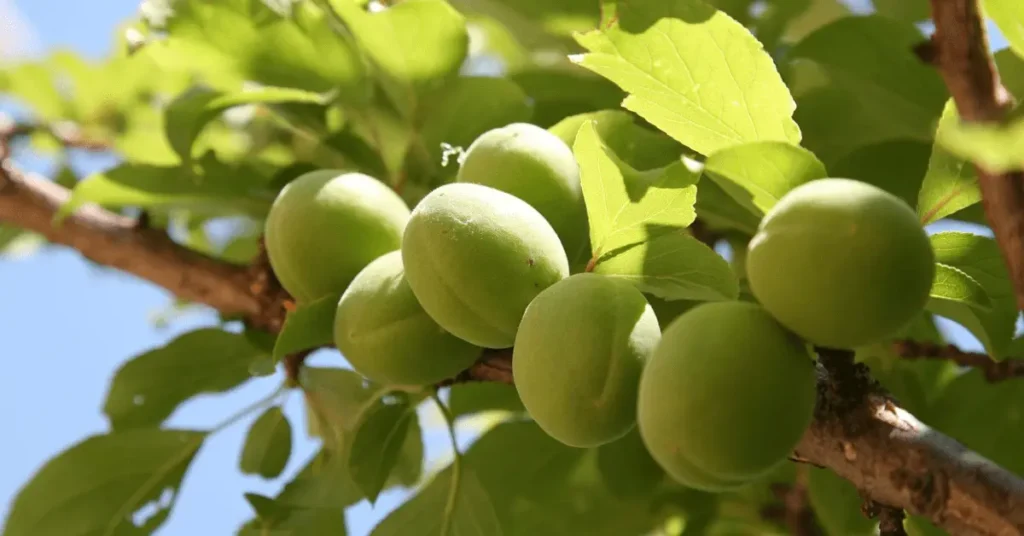
26-Gooseberries:
Green gooseberries are small, spherical, or slightly oval fruits, typically about the size of a grape.
They have translucent, light green color, and their look is defined by a cluster of veins on the surface.
Located:
Gooseberries are found in temperate areas and are native to Europe, North Africa, and a few parts of Asia.
Benefits:
- Green gooseberries are a powerful source of vitamins, which is an essential nutrient that helps the immune system and contributes to universal health.
- They are excessively high in nutritional fiber, which aids digestion and can assist in maintaining a healthy gut.

27- Tomatillos:
Green tomatillos are small, round, and green in color, normally about the size of a golf ball.
Located:
Tomatillos are native to Central America and Mexico and have been a staple in Mexican cuisine for centuries.
Benefits:
- Tomatillos are naturally low in fat, making them an excellent choice for those ones looking to lessen their fat intake.
- Tomatillos comprise antioxidants along with flavonoids and beta-carotene, which help combat oxidative stress and decrease the risk of chronic diseases.
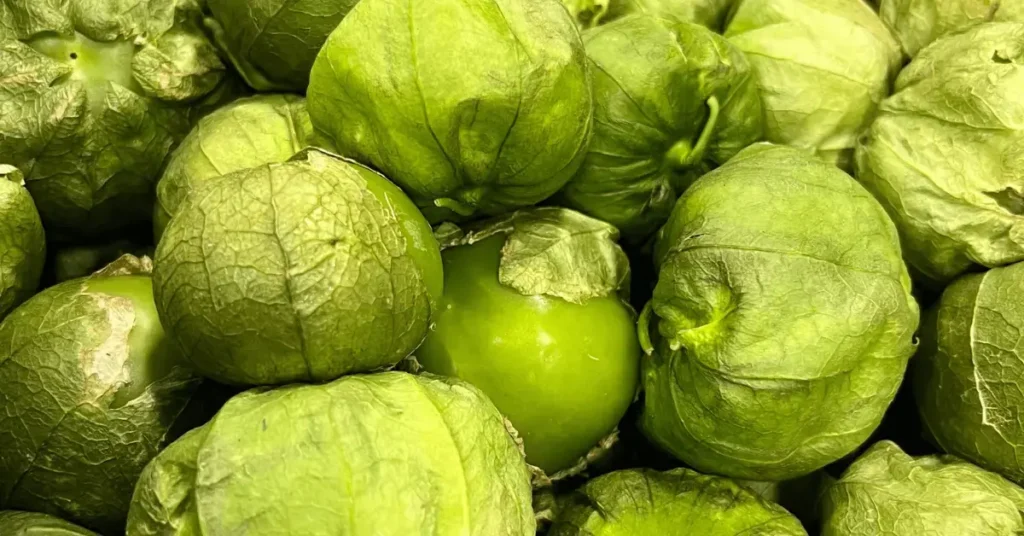
28- Tamarind:
Green tamarind pods are younger and unripe, usually light green to yellow in color.
They are elongated and cylindrical, with a hard outer shell that has to be cracked to access the pulp inside.
Located:
Tamarind is usually located in tropical areas of Asia, along with India, Thailand, Malaysia, and parts of Africa.
Benefits:
- The antioxidants in green tamarind may also contribute to healthy skin and slow down the signs of aging.
- It acts as a herbal laxative and may relieve indigestion and constipation.

29-Olives:
Green olives are usually harvested earlier than they completely ripen, giving them their characteristic green to mild green color.
They are oval or spherical in form and have a firm, slightly crunchy texture.
Located:
Green olives are grown in various Mediterranean countries, including Spain, Italy, Greece, and Turkey, where they’re a staple in the nearby cuisine.
Benefits:
- Green olives are a good source of monounsaturated fats, which can be related to a reduced hazard of coronary heart disease and improved cholesterol levels.
- Green olives are a source of bone-strengthening minerals like calcium and phosphorus.

30-Cactus Pear:
Green cactus pears are oval or pear-shaped fruits blanketed in tiny, spiky thorns that are commonly removed earlier than consumption.
Located:
Cactus pears are local to the Americas and are usually found in arid and semi-arid areas of North and South America, which include Mexico, the southwestern United States, and components of South America.
Benefits:
- They contain antioxidants, including betalains and flavonoids, which help fight oxidative pressure and inflammation.
- The potassium and magnesium content material in cactus pears might also additionally make contribute to a healthy cardiovascular system.

31-Bergamot:
Bergamot is a small, spherical citrus fruit, similar in size to a normal orange but with a unique yellow or greenish-yellow color.
Located:
Bergamot is mainly cultivated in the Calabria region of southern Italy, where the fruit’s specific aroma and taste are enormously prized.
Benefit:
- Bergamot vital oil is extracted from the fruit’s peel and is utilized in aromatherapy for its calming and mood-enhancing properties.
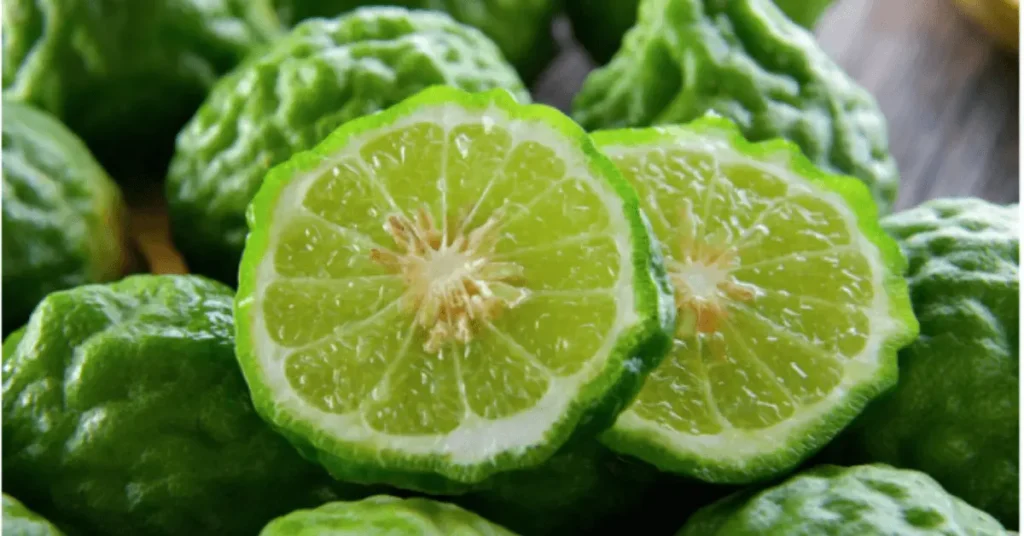
32-Cucamelon:
Cucamelon resembles a tiny watermelon, about the size of a grape or cherry tomato.
Located:
Cucamelons are native to Mexico and Central America, where they have been cultivated for centuries.
Benefits:
- Cucamelons are a low-calorie snack option, making them suitable for weight-conscious individuals.
- Their fiber content aids digestion and contributes to a healthy gut.

33-Feijoa:
Feijoa is a small, green fruit that usually ranges from 1 to 3 inches in length. The skin is smooth and green, and while ripe, it could have a slightly wrinkled appearance.
Benefits:
- Feijoa is a great source of vitamins, which is vital for a sturdy immune system and healthy skin.
- Feijoa is relatively low in calories, making it an appropriate snack for those managing their weight.

34-Green mangoes:
Green mangoes are firm and usually green in color, with a bitter, tangy flavor.
The flesh inside is white or light yellow and is known for its crisp texture and bitter taste.
Benefits:
- Green mangoes are an excellent source of vital vitamins, especially vitamin C, which helps the immune system and skin.
- Chewing on green mangoes may also assist in strengthening gums and decreasing awful breath.

35-Jackfruit:
Jackfruit has a spiky, green, and often bumpy exterior. The inside of the fruit reveals clusters of edible yellow, sweet flesh, and big seeds.
Benefits:
- Jackfruit is a nutritional powerhouse.
- It’s filled with vitamins, minerals, and fiber, making it an extraordinary addition to a balanced diet.

36-Jocote Fruit:
Jocote fruit is incredibly small, about the size of an apricot or plum. It has a vibrant, reddish-orange or yellow skin when ripe, and its flesh surrounds a huge seed.
Flavor:
Jocote has a candy-like and tangy flavor.
Benefits:
- Jocote is a good supply of nutrients and minerals, along with nutrition C, nutrition A, and nutritional fiber.
- Its antioxidants can assist in increasing the immune system and promoting healthy skin.

37-SourSop:
Soursop is a green, spiky fruit with a bumpy exterior.
It can become quite large, normally weighing between 2 and 5 kilograms (4.4 and 11 pounds).
Flavor:
Like a mix of pineapple, apple, & strawberry.
Benefits:
- In traditional medicine, soursop has been used for its healing properties, which include its use to relieve certain illnesses and enhance overall health.
- Soursop is high in vitamins, especially vitamin C and B-complex vitamins, in addition to vital minerals.

38-Green figs:
Figs are small to medium-sized fruits with a smooth, pale green color.
Inside, the flesh is pinkish-white with small seeds.
Benefits:
- The excessive fiber content in green figs can promote healthy digestion, prevent constipation, and assist usual intestine health.
- The fiber in green figs can help promote a feeling of fullness, making them a healthy snack for those looking to manage their weight.

39-Finger Limes:
Finger limes are small, elongated fruits resembling slim cucumbers or, as their name suggests, fingers. They are available in diverse colors, such as green, yellow, or even shades of pink and red.
Flavor:
The flavor is often defined as a mixture of traditional lime and lemon with a subtle hint of herbal notes.
Benefits:
- Finger limes are a good supply of vitamin A and numerous antioxidants, which contributes to their health benefits.
- They can raise the immune system and aid overall well-being.

40-Green Black Sapote:
Black sapote, scientifically called Diospyros nigra, resembles a small, unripe green tomato on the outside. However, it transforms into a dark, chocolate-colored when it ripens, hence the nickname “Chocolate Pudding Fruit.“
Flavor:
- The flavor of black sapote is regularly defined as a combination of chocolate and pear, with a touch of vanilla.
- It’s candy and satisfying, making it a natural dessert substitute.
Benefits:
- Black sapote is a superb supply of various vital nutrients, consisting of nutrients A and C in addition to nutritional fiber.
- It is low in fat and calories, making it a healthy alternative for those looking to indulge in a chocolate-flavored treat without the guilt.
41- Marula Fruit:
Marula fruit is usually small, round, and yellow in color when ripe. It has a hard outer skin and soft, juicy flesh on the inside.
Flavor:
The fruit has a unique, sweet-tart taste and a fragrant aroma.
Located:
Marula trees are native to numerous African countries, along with South Africa, Namibia, Botswana, and Zimbabwe.
Benefits:
- Marula fruit is rich in vitamin C and different antioxidants that may help raise the immune system and protect the body against oxidative stress.
- It is a great source of vital minerals, along with magnesium, which help numerous physical functions.

42-Osage Orange:
The fruit of the Osage orange, typically referred to as the “hedge apple,” is large, roughly the size of a grapefruit.
It has bumpy, greenish-yellow, wrinkled skin with a warty appearance.
Flavor:
The fruit is inedible for human beings because of its unpalatable flavor and is frequently used for ornamental purposes or as a natural insect repellent.
Uses:
- While the fruit itself isn’t always consumed, the Osage orange tree has numerous uses.
- Its timber is prized for its sturdiness and is utilized in making bows and tools.
- The tree’s dense, thorny branches were traditionally used as hedgerows to create natural fences and barriers.

43-Yuzu:
Yuzu is usually small and round, and resembles a yellow or greenish-yellow grapefruit.
Its skin is tough and bumpy, even as the inner fruit is split into segments, just like other citrus fruits.
Fragrance:
Yuzu is especially aromatic, and its fragrance is a mixture of lemon, mandarin, and grapefruit.
Benefits:
- Yuzu is rich in vitamin C, a potent antioxidant that enhances the immune system and promotes skin health.
- Yuzu has been utilized in traditional remedies for its potential to relieve cold symptoms, lessen stress, and enhance circulation.

44-Hala Fruit:
Hala fruit is small and round, generally about the size of a golfing ball.
The fruit is covered in a spiky orange, or reddish skin, resembling a miniature pineapple.
Located:
Hala fruit is usually found in coastal areas of the Pacific Islands, including Hawaii, Fiji, and the Philippines, as well as in components of Southeast Asia.
Benefits:
- It is rich in nutritional fiber, which helps digestive fitness and regulate blood sugar levels.
- The fruit’s sweet and fragrant flavor makes it a popular ingredient in various desserts, jams, and beverages.

45-West African Horned Cucumber:
The West African Horned Cucumber is known for its spiky, orange to yellow skin, protected by horn-like protrusions, giving it its unique appearance.
When cut open, it reveals a colorful green, jelly-like flesh studded with fit to eat seeds.
The texture is frequently defined as a mix of cucumber and kiwi.
Benefits:
- The seeds of the West African horned cucumber are rich in healthy fat and protein, making them a precious dietary component.
- This fruit is a source of vital nutrients and minerals, including vitamin C and nutritional fiber, which contributes to a healthy diet.
46-Cempedak Fruit:
Cempedak fruit is normally larger than a jackfruit but smaller than a breadfruit, with a rough, spiky green color.
When it ripens, the skin turns brown and can have a slightly softer texture.
Located:.
Cempedak is typically found in international locations throughout Southeast Asia, which includes Malaysia, Indonesia, and Thailand.
Benefits:
- Cempedak is a great source of nutritional fiber, vitamins, and minerals, presenting important vitamins for a healthy diet.
- The fruit’s natural sugars make it a tasty treat, and it’s often in a while utilized in cakes and snacks in the areas in which it is grown.

47-Monk Fruit:
Monk fruit is a small, green gourd-like fruit, usually about the size of a lemon. The fruit’s skin is thin, green, and includes smooth spines.
Cultivated:
Monk fruit is ordinarily cultivated in the mountains of southern China, specifically in the Guangxi and Guangdong provinces.
Benefits:
- Monk fruit is considered a secure sugar alternative for most people, as it does not have the same impact on blood sugar levels as normal sugar.
- Monk fruit extract is used as a sugar alternative in diverse meals and beverages, making it a popular choice for people searching for a way to lessen sugar consumption or control their blood sugar ranges.
48-Guinep Fruit:
Guinep is a small, round fruit, roughly the size of a grape. It has a thin, firm skin, normally green or yellow, and it grows in clusters on long, hanging branches.
Flavor:
When ripe, it has a sweet and tangy taste.
Located:
Guinep is native to tropical and subtropical regions, consisting of components of the Caribbean, Central and South America, and West Africa.
It is normally observed in nations like Jamaica, the Dominican Republic, and Puerto Rico.
Benefits:
- The fruit is believed to have various traditional and folk uses, along with natural remedies and tonics.
- Guinep is a superb source of vitamin A and nutritional fiber, contributing to a healthy diet and supporting the immune system.
49-Calabash Fruit:
Calabash fruits are generally large, spherical, or oval, and they could grow up to a foot or more in diameter.
- The outer shell is tough and woody, frequently with a green or yellowish hue.
Inside, the fruit consists of fibrous and pulpy flesh that is frequently used for numerous purposes.
Benefits:
- The internal flesh of the calabash is edible and can be used to make various dishes, such as soups, stews, and desserts.
- Calabash has been used for its potential medicinal advantages in a few traditional natural remedies, and it can have diuretic and anti-inflammatory properties.

50-Acorn Squash:
Acorn squash is normally small, roughly the size of an acorn or a huge tomato.
It has a darkish green, ribbed skin.
Flavor:
The flesh inside is golden-yellow to orange and has a barely sweet and nutty flavor.
Located:
Acorn squash is usually grown in numerous areas across the world; however, it is mainly familiar in North America, especially in the United States and Canada.
Benefits:
- Acorn squash is a nutritious vegetable rich in nutrients and minerals, including vitamin A, vitamin B1 & B6.
- It is a great source of nutritional fiber, which helps with digestive fitness and might help regulate blood sugar levels.



